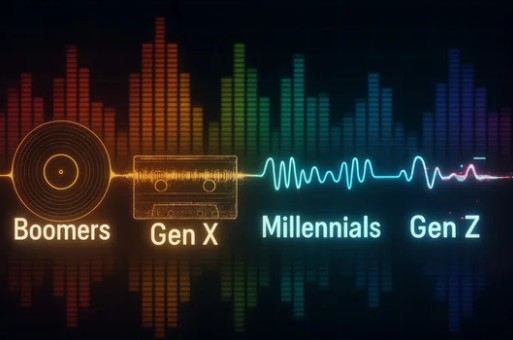This nonprofit is a 501(c)(3) tax exempt organization
The concept of generational cohorts—groupings of people born within roughly 15- to 20-year spans who share formative experiences—emerged from sociology in the early 20th century and was popularized by writers William Strauss and Neil Howe in their 1991 book Generations. While the exact boundaries and labels remain debated, demographers, marketers, and historians generally agree on six living cohorts in the Western world today: the Silent Generation, Baby Boomers, Generation X, Millennials, Generation Z, and Generation Alpha. Each carries distinct economic, technological, and social imprints that shape values, work styles, and worldviews. This essay surveys all six, providing consensus birth-year ranges and core characteristics drawn from longitudinal studies, census data, and cultural analysis.
The Silent Generation (born 1928–1945)
The Silent Generation, sometimes called the Traditionalists or the Lucky Few, came of age during the Great Depression and World War II. Demographers place their birth years between the 1928 stock-market crash and the end of WWII in 1945, yielding a cohort of roughly 50–60 million Americans at its peak.Economic context. Scarce jobs and wartime rationing instilled frugality and deference to authority. Many men enlisted or worked in defense industries; women entered factories in unprecedented numbers but were expected to return home postwar.
Core traits.
Conformity and duty. The “silent” label reflects a reluctance to challenge institutions—government, corporations, churches—compared to later cohorts.
Work ethic. Loyalty to a single employer was common; the average tenure exceeded 20 years.
Civic mindedness. High voter turnout and community-club membership (Rotary, Elks) defined mid-century adulthood.
Pew Research (2015) found that 79 % of Silents owned homes by age 30, far above later cohorts, and they remain the wealthiest elderly generation due to defined-benefit pensions and postwar asset appreciation. Culturally, they produced figures like Martin Luther King Jr., Marilyn Monroe, and the Beatles’ early managers—quiet architects of change rather than loud revolutionaries.
Baby Boomers (born 1946–1964)
The post-WWII baby boom produced 76 million Americans, the largest U.S. cohort until Millennials. The boom began with returning GIs and ended as the Pill and women’s workforce participation curtailed fertility.
Economic context. Subsidized mortgages, the GI Bill, and expanding suburbs fueled prosperity. Boomers entered the workforce during the 1970s oil shocks and stagflation but later rode the 1980s–1990s bull market.Core traits.
Idealism and individualism. Raised on Dr. Spock’s permissive parenting and civil-rights imagery, Boomers championed personal fulfillment (“do your own thing”).
Workaholism. The 60-hour week became a badge of honor; many delayed retirement.
Cultural dominance. They invented the rock concert, the protest march, and the self-help industry.
AARP data show Boomers control 70 % of U.S. disposable income despite being only 20 % of the population. Their political split—progressive on social issues, conservative on economics—still defines partisan fault lines.
Generation X (born 1965–1980)
Often called the “middle child” of generations, Gen X numbers about 65 million in the U.S. The label, borrowed from Douglas Coupland’s 1991 novel, originally connoted aimless slackers but has been reclaimed as pragmatic realism.
Economic context. Latch-key childhoods coincided with divorce rates peaking at 50 %, dual-income necessity, and the 1980s recessions. They were the first cohort to face student debt as grants dried up.Core traits.
Self-reliance. “Figure it out” became a mantra; 64 % grew up in households where both parents worked (U.S. Census).
Skepticism of institutions. Watergate, AIDS, corporate downsizing bred cynicism—only 19 % trust government “most of the time” (Pew 2023), lowest of any cohort.
Technological bridge. Analog natives who adopted PCs, MTV, and early internet; they created grunge, hip-hop sampling, and the dot-com boom.
Gen X pioneered work-life balance rhetoric (though many still log long hours) and entrepreneurial side hustles. They are the most racially diverse cohort to date at their formative age and the first where women consistently outpaced men in college enrollment.
Millennials (born 1981–1996)
Also known as Generation Y, Millennials overtook Boomers numerically in 2019 (72.1 million vs. 71.6 million, U.S. Census). The cutoff is typically the mid-1990s, before children fully recall dial-up internet.
Economic context. They graduated into the 2001 dot-com bust and 2008 Great Recession; median net worth at age 30 is half that of Boomers at the same age (Federal Reserve). Student debt averages $33,000 per borrower.Core traits.
Digital fluency. First natives of the internet; 90 % owned a smartphone by age 25.
Values-driven. Prioritize purpose over paycheck; 62 % want jobs that “make a difference” (Gallup).
Delayed milestones. Median marriage age is 30 for men, 28 for women; homeownership lags prior cohorts by 8–10 percentage points.
Subgroups include “Yuppies 2.0” (urban professionals) and the “Burnout Generation” chronicled in Anne Helen Petersen’s viral BuzzFeed essay. Politically, they lean left but splinter on economics—progressive on climate and identity, centrist on regulation.
Generation Z (born 1997–2012)
The post-Millennial cohort, sometimes called Zoomers, is projected to reach 78 million in the U.S. by 2030. The endpoint of 2012 aligns with the widespread adoption of tablets and the end of the post-9/11 war surge.
Economic context. Grew up during recovery from 2008, then faced COVID disruptions. Part-time “gig” work via Uber and DoorDash is normative; 53 % of Gen Z teens already hold jobs (Deloitte 2023).Core traits.
Digital immersion. Average screen time exceeds 7 hours daily outside school; TikTok and Snapchat shape identity.
Pragmatism and anxiety. 42 % report persistent mental-health concerns (APA 2022), highest recorded.
Entrepreneurial streak. 41 % want to start a business, vs. 28 % of Millennials at the same age.
Gen Z is the most ethnically diverse U.S. cohort ever—48 % non-white—and the first global generation, fluent in memes and cross-border subcultures. They prioritize climate action (72 % call it a crisis, Pew) and fluid gender expression.
Generation Alpha (born 2013–present)
The children of Millennials, Alphas are still emerging. McCrindle Research coined the term in 2008, predicting a cohort shaped by AI, climate tech, and post-COVID norms. As of 2025, the oldest Alphas are 12.
Economic context. Born into the smartphone ubiquity and the 2020–22 inflation spike. Early education featured remote learning and AI tutors.
Core traits (projected).
AI companionship. Chatbots and smart toys are playmates; 60 % of U.S. kindergartners use educational apps weekly (Common Sense Media).
Planetary awareness. Curriculum emphasizes sustainability; toy aisles feature carbon-neutral branding.
Blended realities. VR/AR integration in schooling foreshadows hybrid physical-digital socialization.
Demographers caution that Alpha’s traits remain speculative; formative shocks—pandemics, geopolitical shifts, breakthrough technologies—will refine the portrait.
Comparative Dynamics and Overlaps
Generations are not monoliths. A 1965-born Xer raised in rural Kansas shares less with a 1980-born Xer in Seattle than with a 1964 Boomer next door. Still, macro forces create statistical clusters:


Labels! It seems nowadays there is a group for everyone... and the groups within groups always carry some sort of "label". Many of these labels are hogwash but perhaps one of the more relevant ones is that of the cohorts of generations born within 15 to 20 spans of one another.
While the exact boundaries and labels remain debated, demographers, marketers, and historians generally agree on six living cohorts in the Western world today: the Silent Generation, Baby Boomers, Generation X, Millennials, Generation Z, and Generation Alpha. Each carries distinct economic, technological, and social imprints that shape values, work styles, and worldviews. This essay surveys all six, providing consensus birth-year ranges and core characteristics drawn from longitudinal studies, census data, and cultural analysis.
